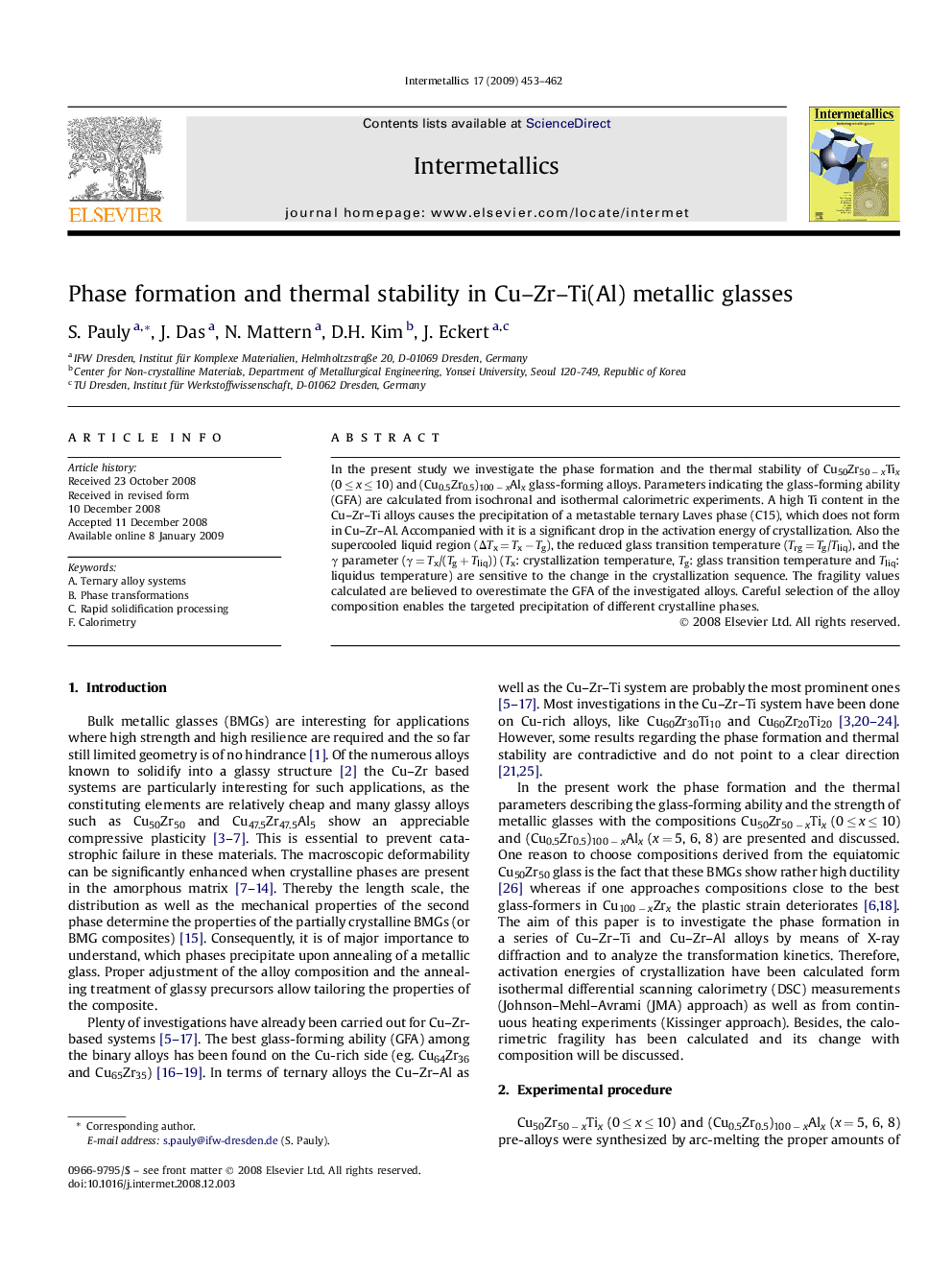| Article ID | Journal | Published Year | Pages | File Type |
|---|---|---|---|---|
| 1601223 | Intermetallics | 2009 | 10 Pages |
In the present study we investigate the phase formation and the thermal stability of Cu50Zr50 − xTix (0 ≤ x ≤ 10) and (Cu0.5Zr0.5)100 − xAlx glass-forming alloys. Parameters indicating the glass-forming ability (GFA) are calculated from isochronal and isothermal calorimetric experiments. A high Ti content in the Cu–Zr–Ti alloys causes the precipitation of a metastable ternary Laves phase (C15), which does not form in Cu–Zr–Al. Accompanied with it is a significant drop in the activation energy of crystallization. Also the supercooled liquid region (ΔTx = Tx − Tg), the reduced glass transition temperature (Trg = Tg/Tliq), and the γ parameter (γ = Tx/(Tg + Tliq)) (Tx: crystallization temperature, Tg: glass transition temperature and Tliq: liquidus temperature) are sensitive to the change in the crystallization sequence. The fragility values calculated are believed to overestimate the GFA of the investigated alloys. Careful selection of the alloy composition enables the targeted precipitation of different crystalline phases.
